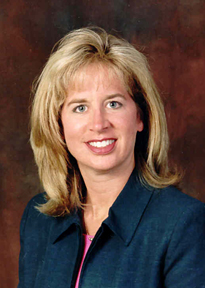Every parent wants their children to achieve more than they did, and education is essential for that dream. Regular eye exams help ensure that your child has the best opportunity to get that education.
Good vision during children’s early years is vital to their development and their long-term eye health, says Kathy Weise, O.D., director of Pediatric Optometry Services at the UAB Eye Care Clinic.
 |
| Kathy Weise |
“Farsightedness, nearsightedness, astigmatism, eye turns and lazy eye are the most common conditions we encounter,” Weise says.
“Discovering your child is 20/20 is great, but there’s a lot more to it. A child may have great vision in one eye and poor vision in the other, and no one may realize it. Or, a child may enjoy good vision for far away objects but suffer with double vision, eyestrain and intermittently blurred vision while reading.
“A thorough eye exam by a qualified eye doctor helps identify and treat these conditions and more.”
The signs
Preschoolers are among those who may not realize the way they see is not normal.
But there are a number of signs or symptoms parents can watch for to see if their child is experiencing problems with his or her vision. Things to watch for in school-age children include squinting, headaches or blurred vision with reading, losing their place while reading, avoiding close work, holding reading material close and red, sore or irritated eyes.
Signs of a vision or eye-related problem in pre-schoolers include a tendency to bump into objects, red eyes or eye lids, frequent rubbing, excessive tearing, avoiding coloring, puzzles or detailed activity, difficulty with eye-hand-body coordination and encrusted eyelids.
“The earlier we can give kids a through examination the better chance we have at being able to correct the problem,” Weise says.
Make an appointment
When should you take your child to the eye doctor?
The American Optometric Association recommends that children receive eye exams at six months, three years and right before they start the first grade, Weise says. Examinations should follow every one to two years thereafter, depending on what is discovered at the initial eye exams.
UAB optometry faculty are at the forefront of pediatric eye care. Weise says the clinic sees about 20 pediatric patients a day and about 4,000 children per year.
“We also have vision-therapy programs, and that’s a benefit not offered by most Birmingham-area clinics,” she says. “All of our faculty are residency-trained or have more than 20 years of experience. All speak at the national level on a variety of pediatric topics, but most important they enjoy focusing that expertise on our kids.”
UAB Eye Care offers discounts to employees and students. For information, or to make an appointment, call 975-2020 or visit www.uab.edu/uabeyecare.